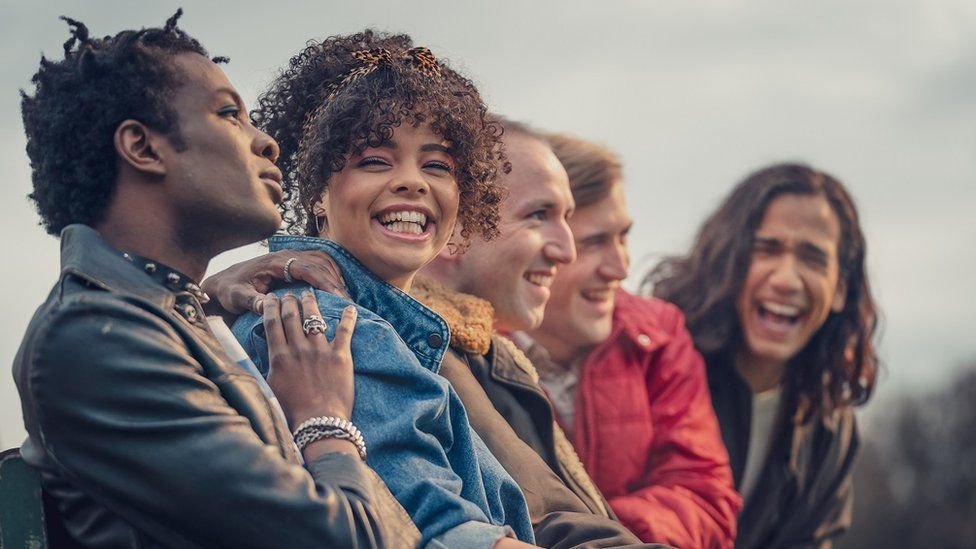Queer Visibility
Can We Really Use Media Representation As A Measure Of Progress?
Set in the New York ball culture of the late 80s and early 90s, ‘Pose’ portrays stories of the gay and trans community living through the AIDS crisis. Photo by Eric Liebowitz - © 2021 - FX
As alternative sexualities and gender identities have become increasingly mainstream, so has the inclusion of LGBTQ+ characters in popular TV shows and films. For many, it can be affirming and encouraging to see people like themselves represented in film and TV – especially when stories like theirs have typically been sidelined.
Certainly, when I was growing up, seeing queer people in the media was life-changing — it showed me that another way of life was actually possible; that there was a history of people like me who had moved beyond fear and shame. I sought out films like But I’m a Cheerleader! and Jennifer’s Body to gaze at sapphic kissing in astonishment, and to this day, I’ll usually go for a comforting gay film when I’m feeling low. Recent releases like The Half of It, a charming Netflix high school comedy, present teenage feelings that many of us saw represented far less than our straight counterparts.
The media-monitoring organisation GLAAD records improvements in LGBTQ+ representation, and last year their Where We Are On TV report recorded another record high for queer representation. LGBTQ+ characters made up 11.9 percent of those on scripted primetime programming in the US, up by 2.8 percent from the previous year.
Russel T Davies’ TV drama ‘It’s a Sin’ broke viewing records on All 4
But with visibility higher than ever, some raise concerns about its superficiality — can we really use media representation as a measure of progress? We put out a survey to ask the GIFTED community what they thought about it all. The majority of responses said that they had noticed a significant increase in visibility throughout their lifetimes, and that the overall result of this representation is positive. While film and TV can help to normalise LGBTQ+ identities, there was an awareness amongst the community that bad representation can proliferate negative or reductive stereotypes, and so as one person highlighted, “there is a responsibility that the representation is accurate, respectful, authentic and safe”. Another response stressed the need to ensure that a vast range of experiences are represented to account for the wide diversity of experiences that fall under the umbrella of LGBTQ+.
Overall, crass and offensive depictions of LGBTQ+ characters are no longer the norm, and we’ve moved beyond the casual homophobia of 90s and 00s shows. Popular media is now more likely to take a more informed approach, especially as many of the creators are queer themselves. Feel Good is a great example of a show tackling sexuality and gender identity in the modern age, while It’s a Sin and Pose provide important queer histories. Telling our own stories can also be powerful: the Netflix comedy Special portrays the story of Ryan, a gay man with cerebral palsy, both written and played by himself. In film, the likes of Moonlight and Portrait of a Lady on Fire are breathtaking portrayals of the queer experience in very different contexts.
Celine Sciamma’s ‘Portrait of a Lady on Fire’ won the Best Screenplay Award and the Queer Palm at Cannes Film Festival in 2019
Yet it might be the case that our focus on representation as a whole misses the mark. Regarding calls for LGBTQ+ representation in big blockbuster films like Captain Marvel, in his Dazed article, Caspar Salmon writes that “instead of asking for better rights for queer people, we find ourselves stuck in this rut of demanding representation, as if that will show we have arrived in any way”. Instead, Salmon argues, we could get used to the idea that “queerness is itself antithetical to the workings of big business; we represent a spanner in the works of commodification”. This speaks to the ways in which the commercialisation of queer representation is used elsewhere.
Photographer Theo Williams told us that representation only “superficially” equals progress, stressing that “a one-dimensional media-friendly representation can negatively affect public discourse about underrepresented groups in society.” He continues, “The visibility is appreciated, but sometimes I feel icky about corporate interest profiting off of the 'currency' of representation.”
This “icky” reality of superficial support for queers to keep up appearances is perhaps most crassly demonstrated in the use of pink-washing by the UK Home Office, when they change their logo to a rainbow symbol during Pride Month while continuing to deport LGBTQ+ asylum seekers to countries where they will face incredible danger.
Photo by Delia Giandeini on Unsplash. "Queer liberation not rainbow capitalism" - Pride parade in Geneva (Switzerland), July 2019.
It’s important not to be fooled by those keeping up appearances without keeping up the work, especially in times of increased tokenistic representation. When we reject rainbow capitalism, we can dream bigger for our community and our futures. It’s crucial to remember that any movement which prioritises the wealth and social progress of the individual over collective aid for the most vulnerable will fail to achieve meaningful change for those who need it most. As LGBTQ+ History month draws to a close, I’ll be taking this energy into every month of the year, in my endeavour to prioritise mutual aid, hold big businesses to account, reject pink-washing from the state, and support independent queer artists. That’s where meaningful progress can be found.




